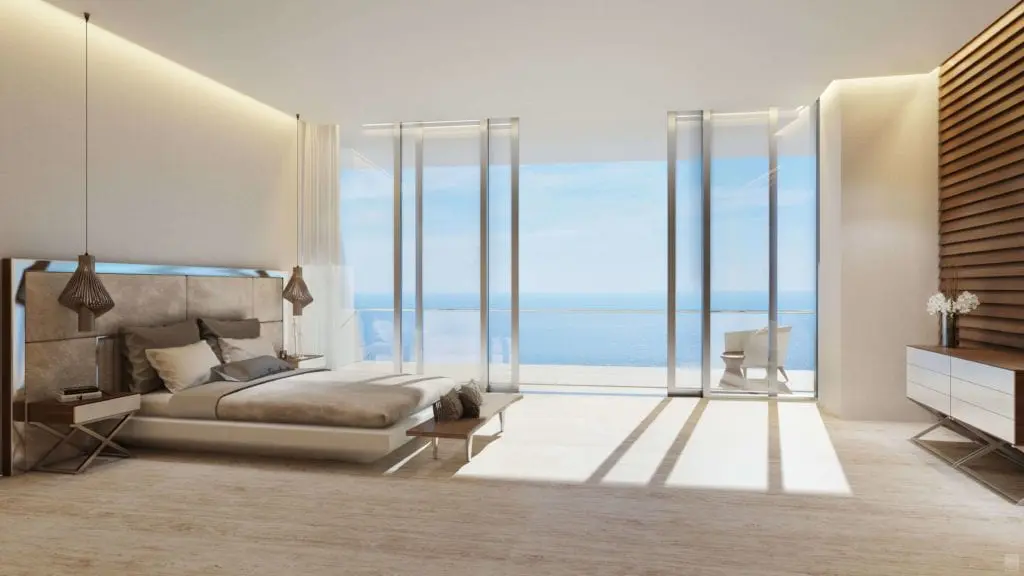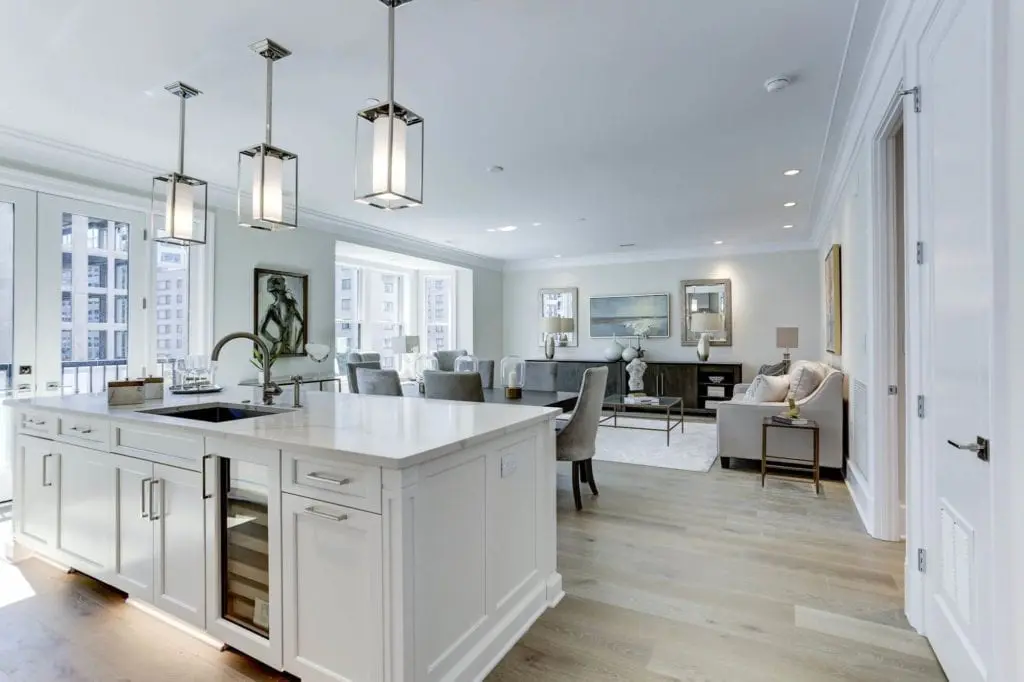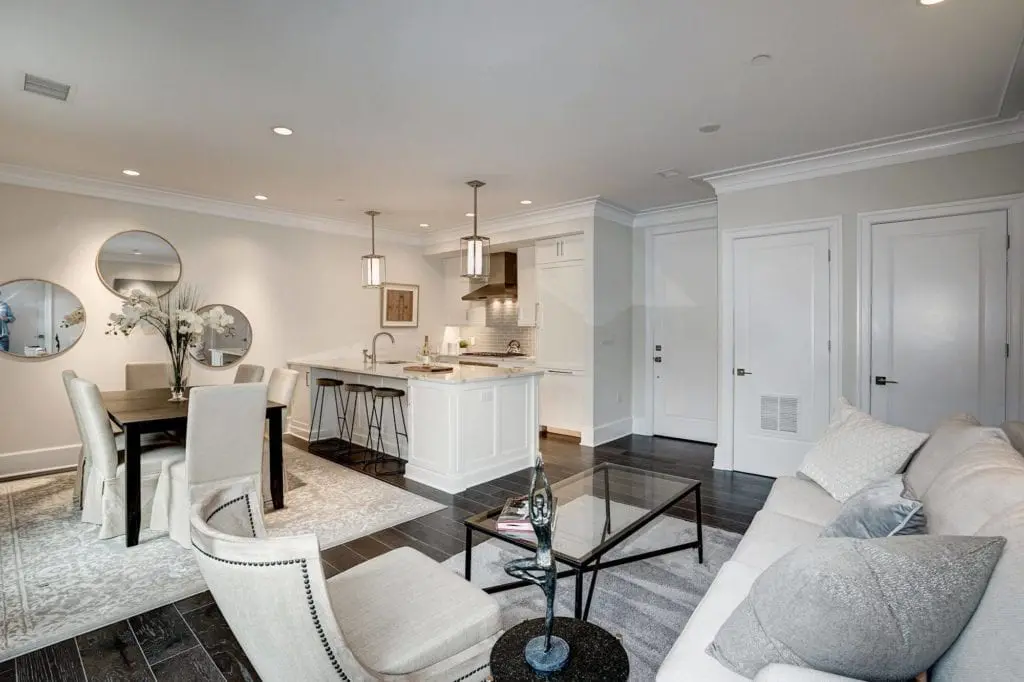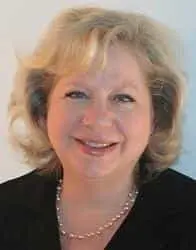Both large & small floor plans are popular among new condo buyers

Whether you’re in the market for a micro-unit or a palatial penthouse, you can probably find a newly built condo to meet your needs. Rather than focus on the middle ground of two-bedroom, two-bathroom condos, developers in many cities are splitting their attention between tiny units and large ones with three, four, five or even six bedrooms.
“The two most active groups of buyers are younger millennials who are first-time buyers and empty-nesters,” says Clint Mann, president of Urban Pace in Washington, D.C., which provides marketing, sales, leasing and advisory services to real estate developers. “These two groups generally want the same things: close access to restaurants, retail and entertainment; walkability; and access to mass transit.”
Where these two groups divide is in their budget and their need for space. In response, some developers are designing condos with a mix of smaller units on the lower levels and larger ones on the upper levels, says Mann.
That dichotomy of unit sizes and their location within a building means that buyers are likely to see a wide range of prices from the $300,000s to several million dollars for condos in the same development.
Condo Size Trends
The split between small and large condos is particularly evident at 1000M, a luxury high-rise in Chicago.
“At 1000M, we have seen condo purchases across a fairly even distribution of unit types and sizes, but we have seen especially strong activity at either end of the spectrum — from our International Collection series, which starts at just over 300 square feet, to our Sky Residences at over 3,000 square feet,” says Peter Olesker, executive vice president of developer services and corporate communications for @Properties, the sales and marketing team for 1000M.
Prices at 1000M start at $313,000 for a home in the International Collection and rise to $8.1 million for a penthouse with 5,488 square feet.
At Turnberry Ocean Club Residences in Sunny Isles Beach, Florida, all condos are designed to replicate single-family homes. The smallest floor plan has three bedrooms and a den and about 3,000 square feet, says Dan Riordan, President of Residential Development for Fontainebleau Development. Prices range from the upper $3 millions to $35 million for a three-level penthouse with six bedrooms, 9 1/2 bathrooms and a private rooftop swimming pool.
“Turnberry Ocean Club is a family-oriented community with a ‘white-glove’ lifestyle including a private country club with two golf courses, three swimming pools with cabanas and 70,000 square feet of indoor and outdoor amenities in the 54-story condo building,” Riordan says. “Every residence has a family room as well as a separate living room so the kids can entertain in one spaces and the adults can be nearby but separate.”
Other developers in the Miami area are also building some larger units in their condos, says Riordan, in response to the expanding interest of families purchasing in the area.

In other markets, such as Washington, D.C., large units primarily appeal to empty-nesters. “Empty-nesters want a third living space, such as a den or a home office or a guest bedroom, and they usually need more storage than first-time buyers,” Mann says. “For empty-nesters the location and size of the condo, along with the timing of its availability, matter more than price.”
For first-time buyers, he adds, affordability is an issue the developers address through more efficient building. Ten years ago, according to Mann, most one-bedroom condos averaged 700 square feet, but now they average 600 square feet.
Creating a range of condos is a natural response to the market, says Olesker. “In a luxury high-rise like 1000M, where the concept is to offer the best of the best, larger plans are a natural fit,” he says. “But we also recognized strong demand among buyers for a pied-à-terre or guest residence with the same luxury features and amenities of a premier building.”
Buyer Motivations
Smaller units appeal not only to millennials buying their first home, but also as a second home for older buyers who want a place to live during the workweek but spend weekends at a country home or beach home, says Mann. Sometimes the motivation is to have a small place in the city to use when visiting friends or family or for city-centered weekends.

At Turnberry Ocean Club, the buyers are mostly young to middle-aged families who plan to use the condos for vacations, says Riordan, although about one-third to one-half plan to live there full-time.
“These are not investors, especially because we don’t have any one- or two-bedroom units,” he says. “These are people who plan to use their condos and keep them in their families for generations.”
At 1000M, Olesker says the buyers and their reasons to purchase there are diverse.
“The common denominator is that they’re buying a lifestyle — the ability to live in what is basically a vertical club with a wide array of amenities for everything from health and wellness, to cultural enrichment, to entertaining,” he says. “Whether it’s a primary or a secondary home, it’s not just about what’s happening inside the four walls: It’s about the desire to experience luxury on a number of different levels.”
Condo Design Predictions
The focus on both small and large units is anticipated to continue.
“From a trend standpoint, in the larger homes what’s exciting is how floor plans, finishes and amenities are evolving to entice this limited pool of buyers,” Olesker says. “The movement toward smaller condominiums is also really exciting. The key is making those 400 or 500 square feet nearly perfect and offering fabulous amenities and services to the point where buyers see their home not as 400 square feet, but as 400 plus 40,000 square feet.”
While middle-of-the-road-size condos are still available in many buildings, developers seem to find a split between large and small units is best for reaching the majority of their target buyers.

Michele Lerner is an award-winning freelance writer, editor and author who has been writing about real estate, personal finance and business topics for more than two decades.
 Home Updates That Look Expensive But Cost $1,000 Or Less
Home Updates That Look Expensive But Cost $1,000 Or Less